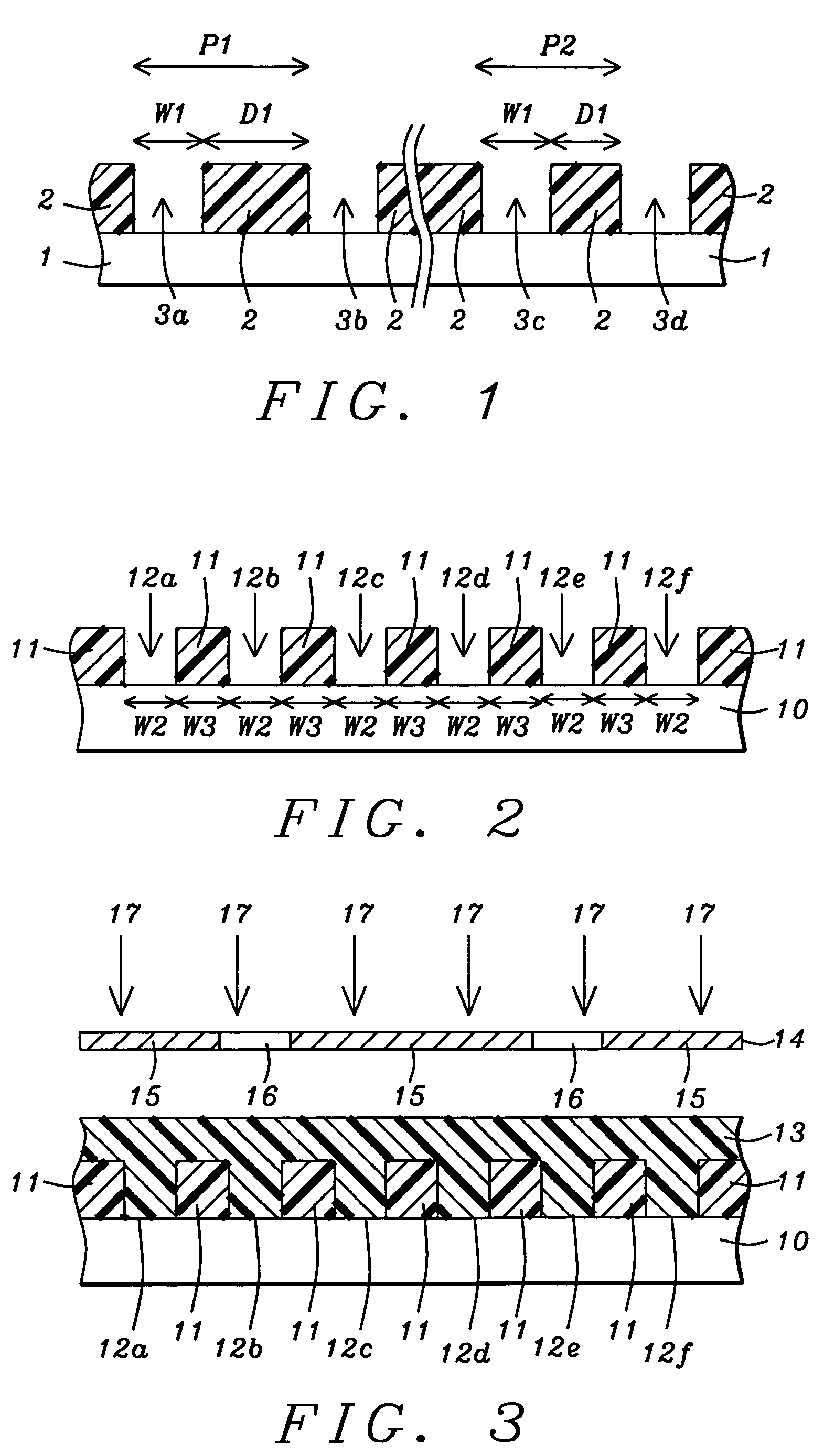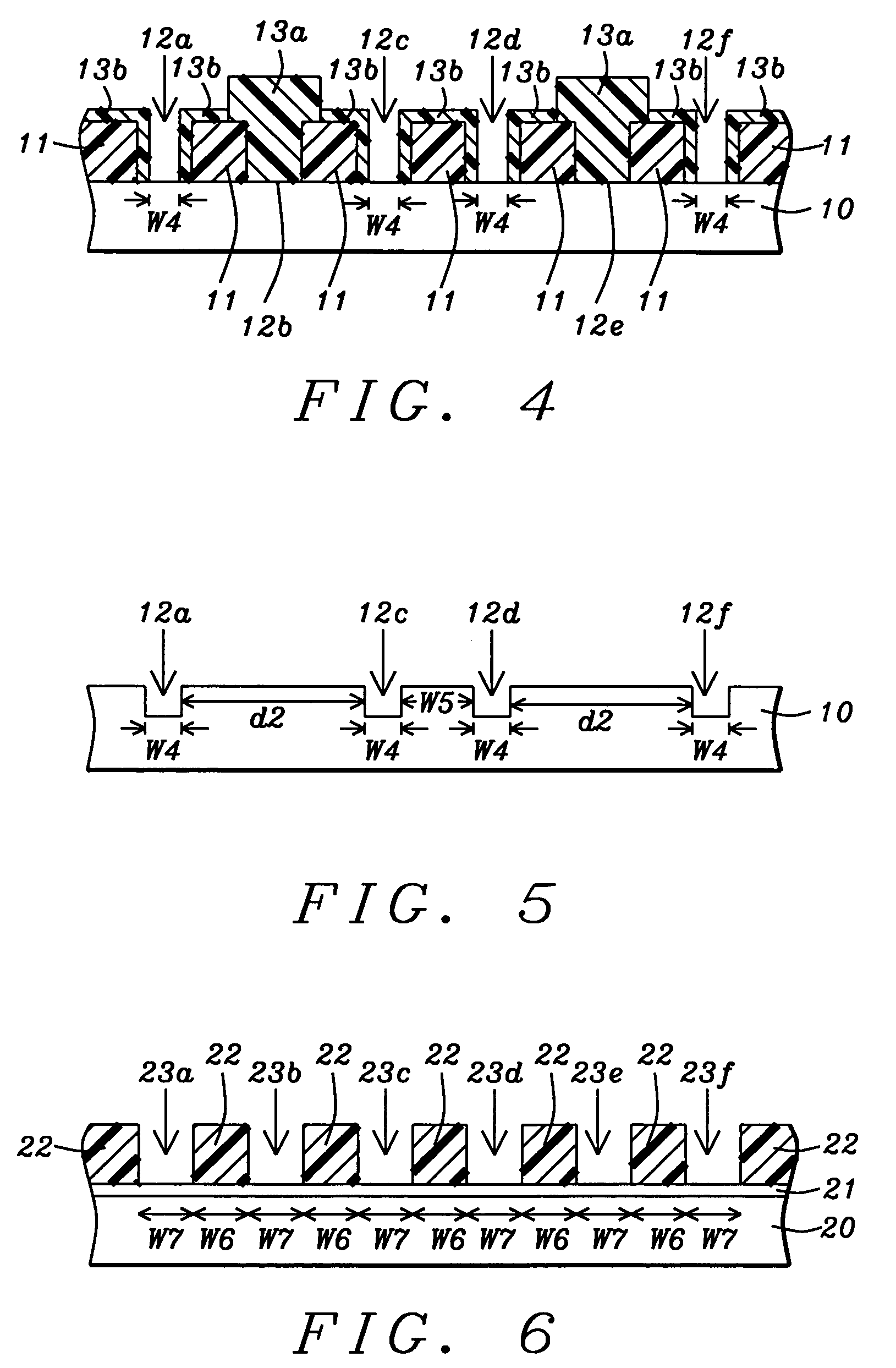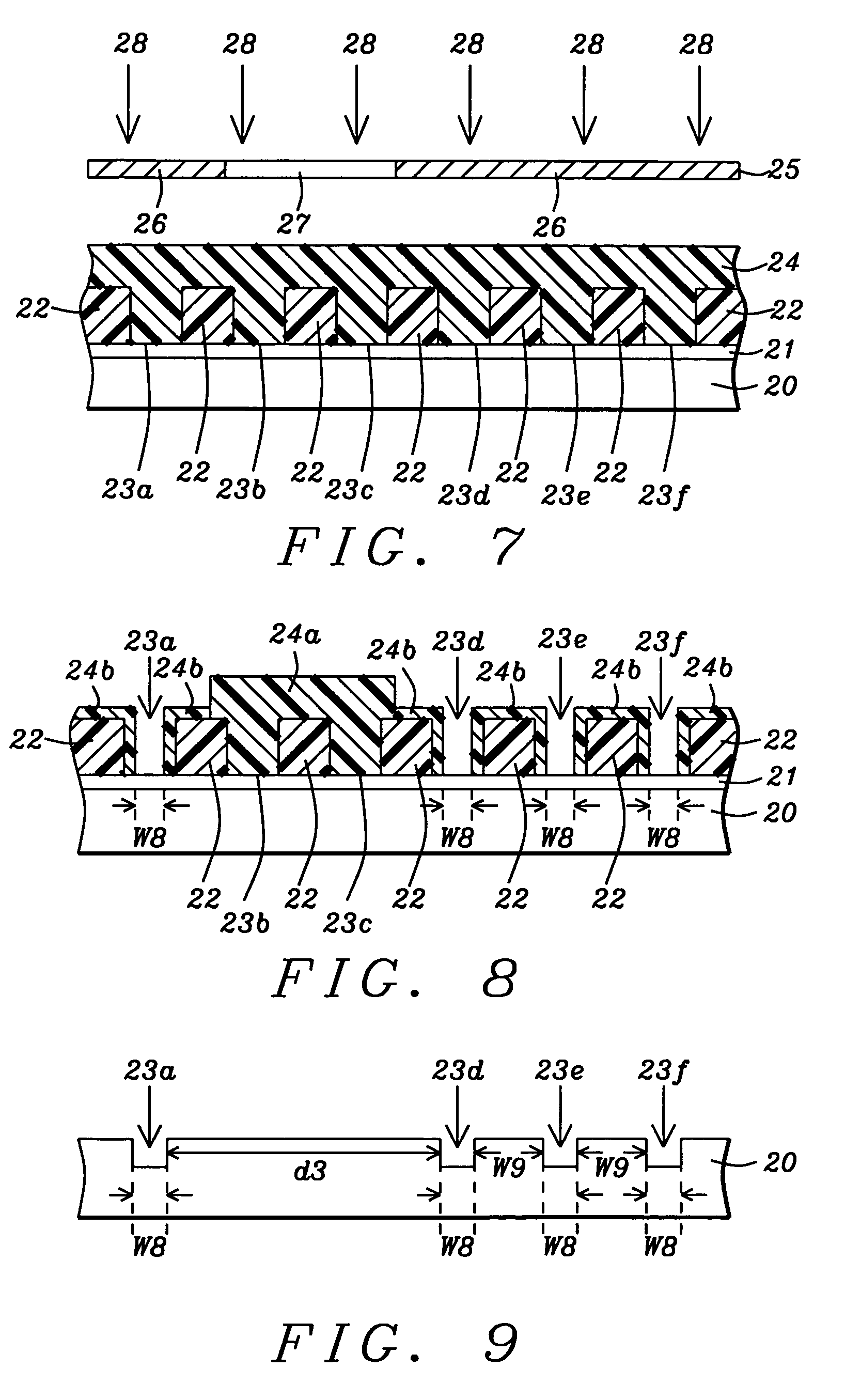Water soluble negative tone photoresist
a negative tone and photoresist technology, applied in the field of manufacturing integrated circuits, can solve the problems of cumbersome generation of opcs and the dependence of space width wb>1/b>, and achieve the effect of shrinking the size of unplugged holes
- Summary
- Abstract
- Description
- Claims
- Application Information
AI Technical Summary
Benefits of technology
Problems solved by technology
Method used
Image
Examples
first embodiment
[0030]The present invention is described with reference to the drawings which are not necessarily drawn to scale and are provided by way of example and not intended to limit the scope of the invention. In the first embodiment as illustrated in FIGS. 2–5, a method is described for shrinking the space width of holes in a resist pattern while simultaneously reducing the pattern density of the holes in the pattern. This method allows holes with the same space width but different pattern densities to be formed in a pattern in a resist layer that is transferred into a substrate. The holes may be vias, contact holes, trenches, or other features which have a space width to be decreased and a pattern density to be reduced.
[0031]Referring to FIG. 2, a substrate 10 is provided that may contain active and passive devices in a substructure that is not shown in order to simply the drawing and direct attention to the present invention. In one embodiment, an anti-reflective coating or ARC (not show...
second embodiment
[0056]In a second embodiment illustrated in FIGS. 6–9, a method is described that relates to shrinking the space width of holes in at least two regions of a first resist pattern having equal pattern densities and equal space widths whereby a second pattern is formed in a substrate in which the two regions have holes with different pattern densities but equal and smaller space widths. In other words, a reduced pattern density is formed in at least one of the substrate regions and all holes formed in the substrate have reduced space widths compared to the first resist pattern.
[0057]Referring to FIG. 6, a substrate 20 is provided that is typically comprised of silicon and may contain active and passive devices in a substructure that is not shown in order to simply the drawing. An anti-reflective coating (ARC) 21 is formed on the substrate 20 in order to control reflectivity during a subsequent resist patterning process. The ARC 21 may be an inorganic material such as silicon nitride or...
PUM
| Property | Measurement | Unit |
|---|---|---|
| wavelengths | aaaaa | aaaaa |
| feature size | aaaaa | aaaaa |
| wavelengths | aaaaa | aaaaa |
Abstract
Description
Claims
Application Information
 Login to View More
Login to View More - R&D
- Intellectual Property
- Life Sciences
- Materials
- Tech Scout
- Unparalleled Data Quality
- Higher Quality Content
- 60% Fewer Hallucinations
Browse by: Latest US Patents, China's latest patents, Technical Efficacy Thesaurus, Application Domain, Technology Topic, Popular Technical Reports.
© 2025 PatSnap. All rights reserved.Legal|Privacy policy|Modern Slavery Act Transparency Statement|Sitemap|About US| Contact US: help@patsnap.com



